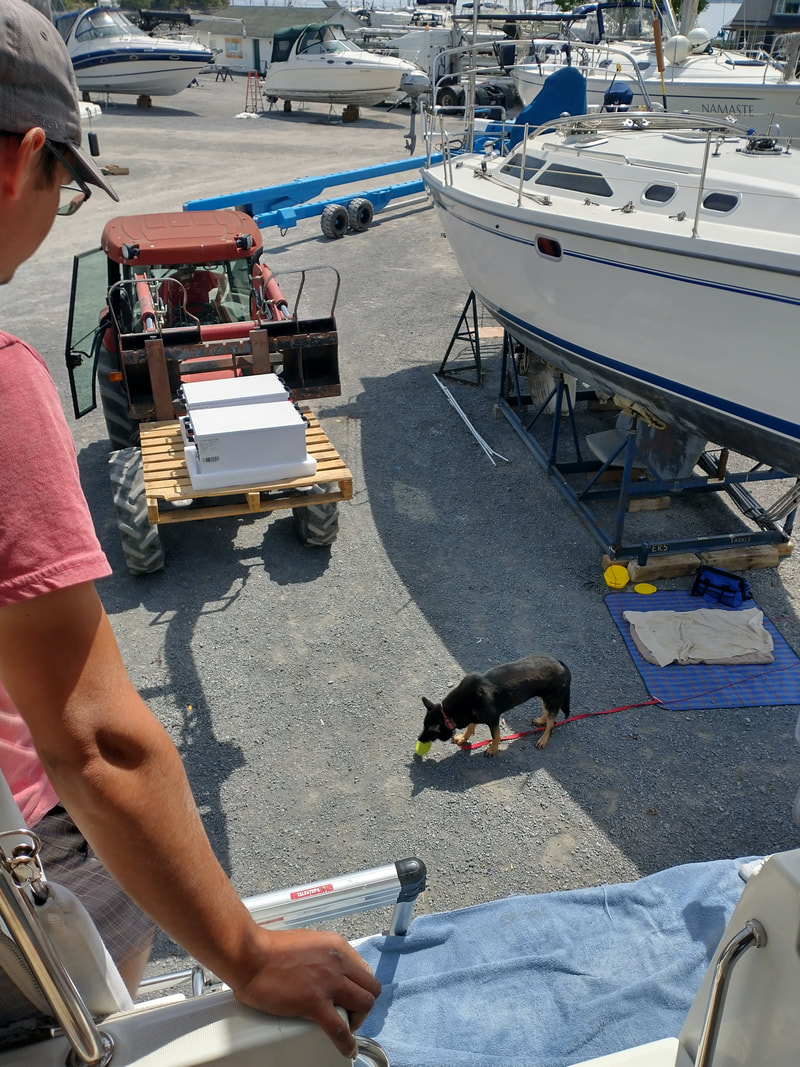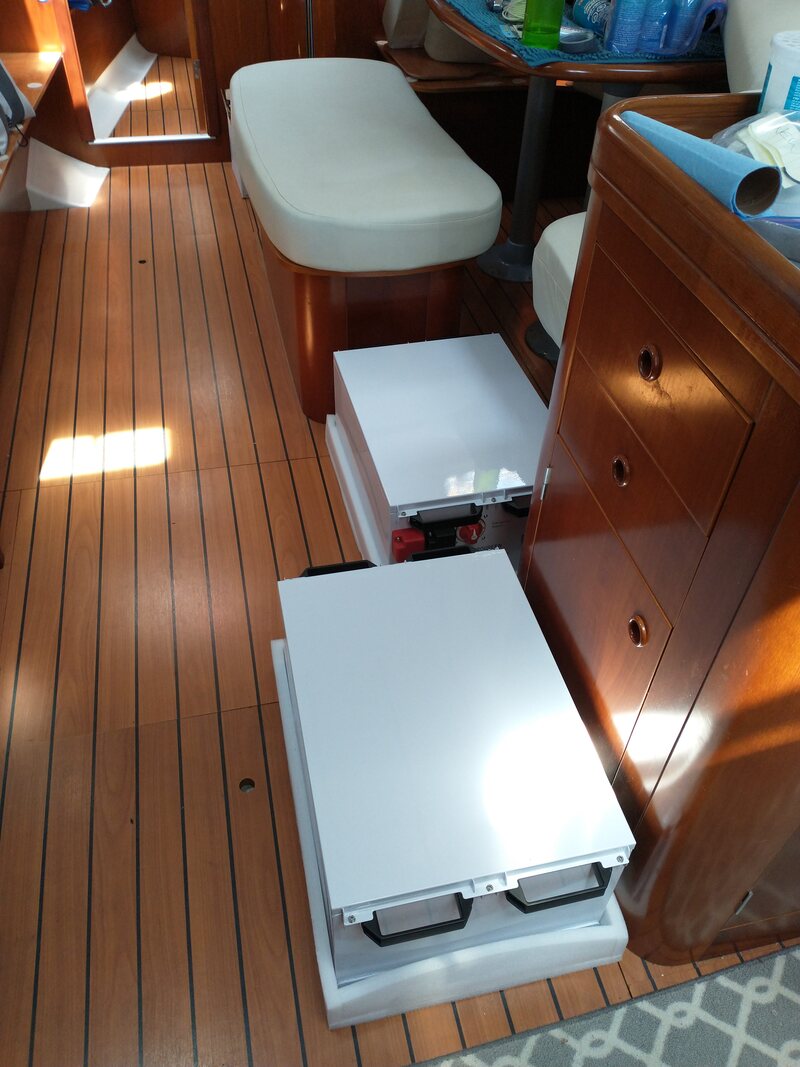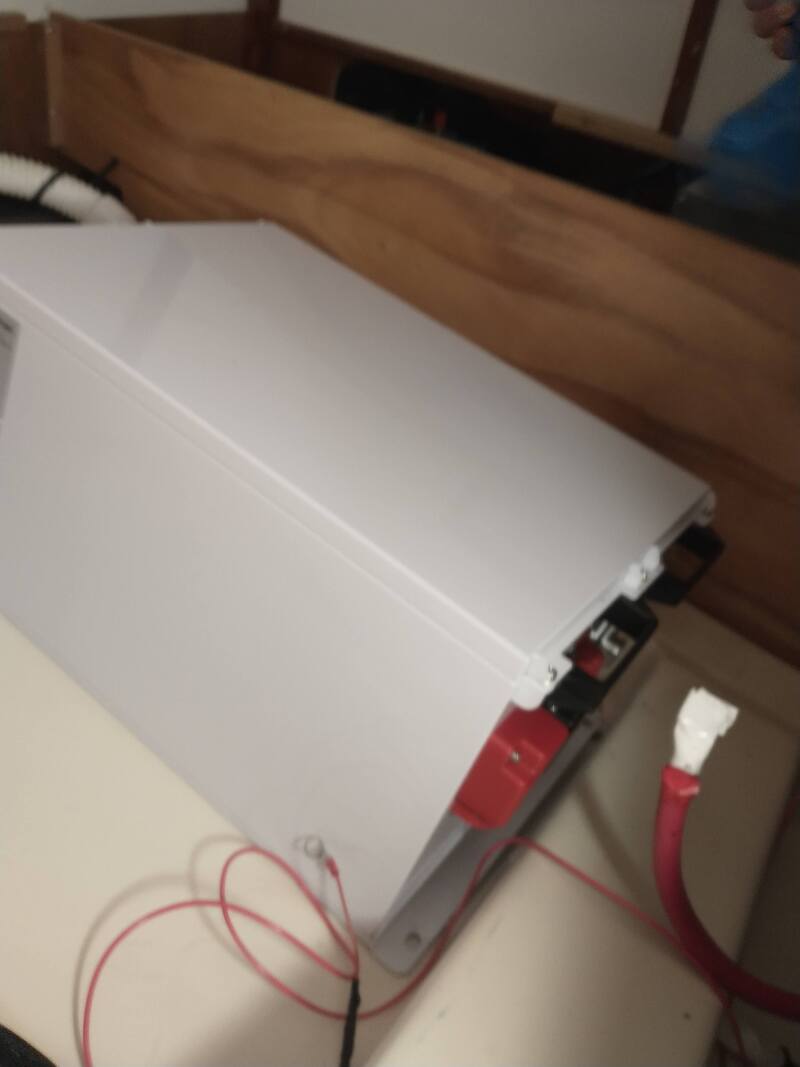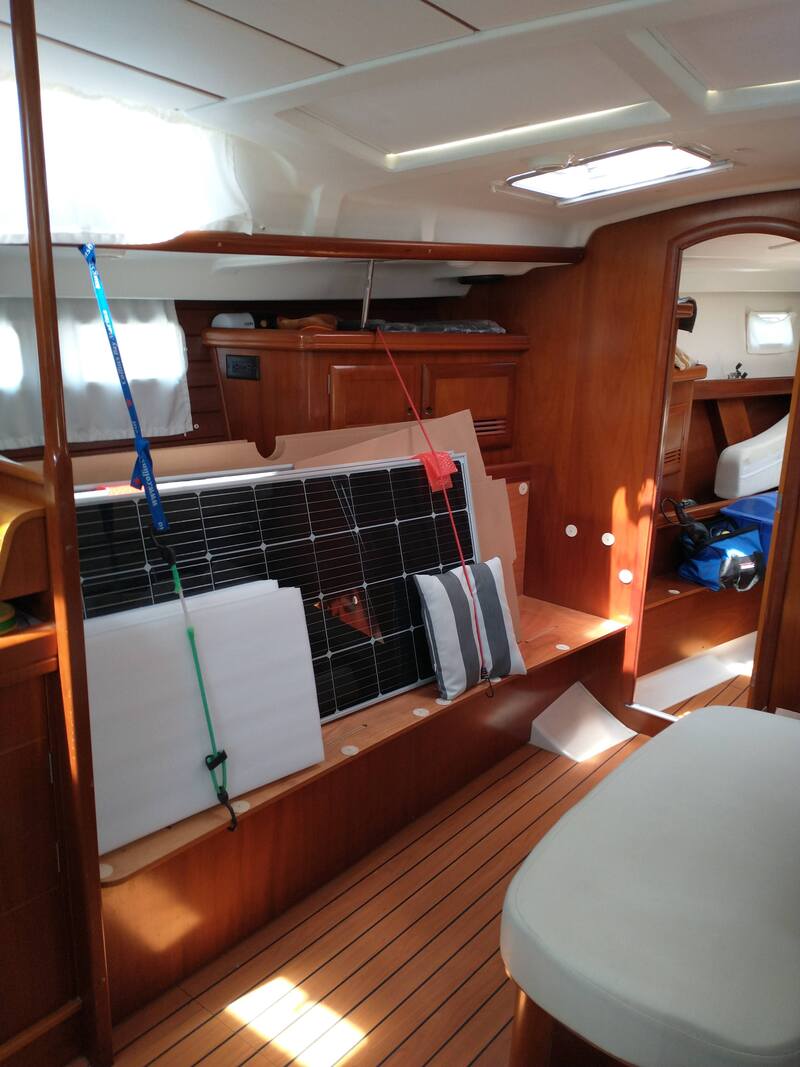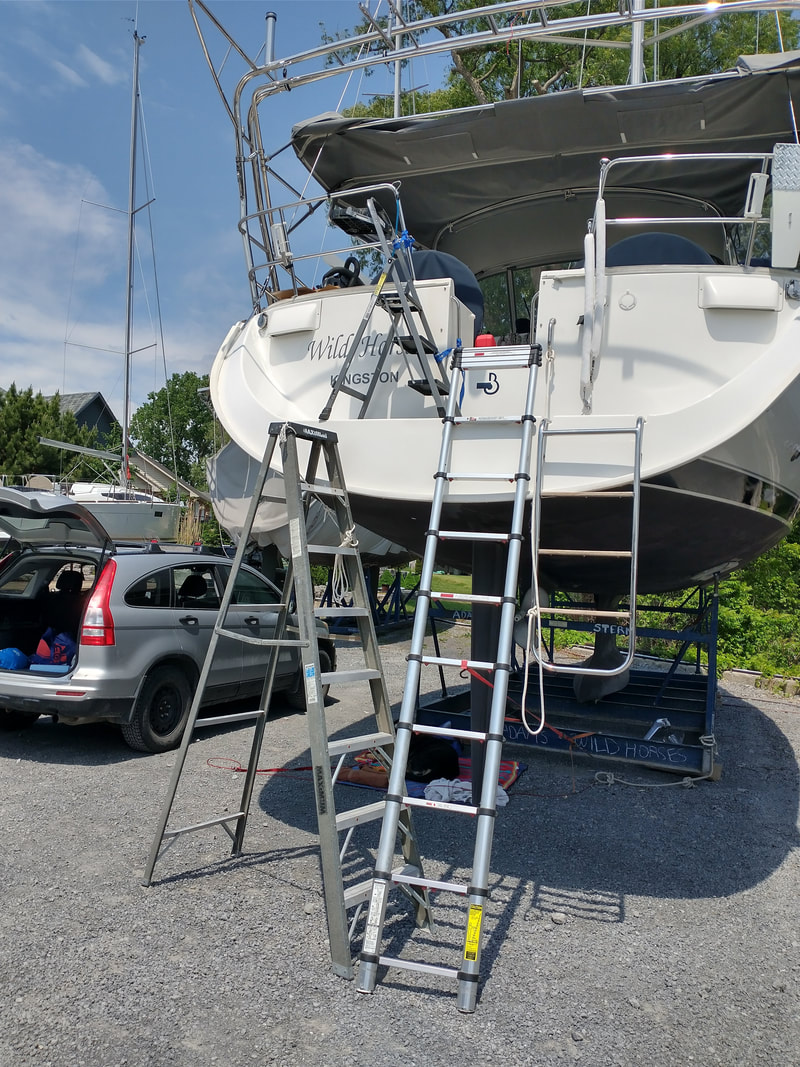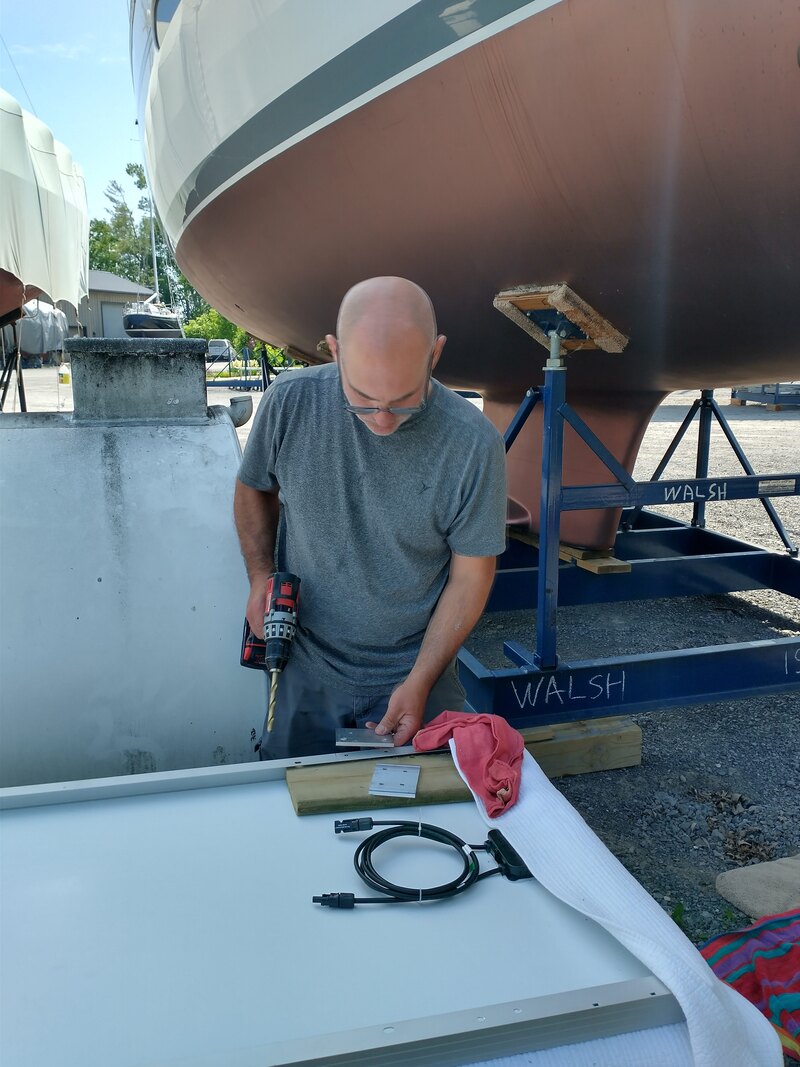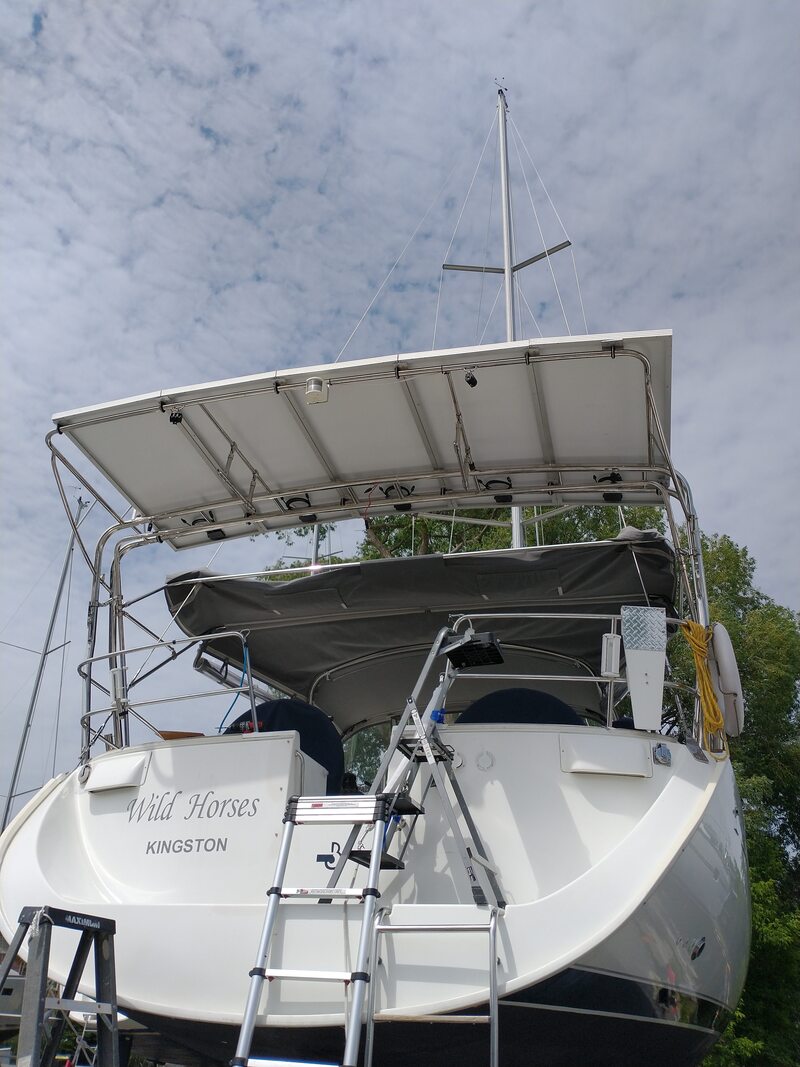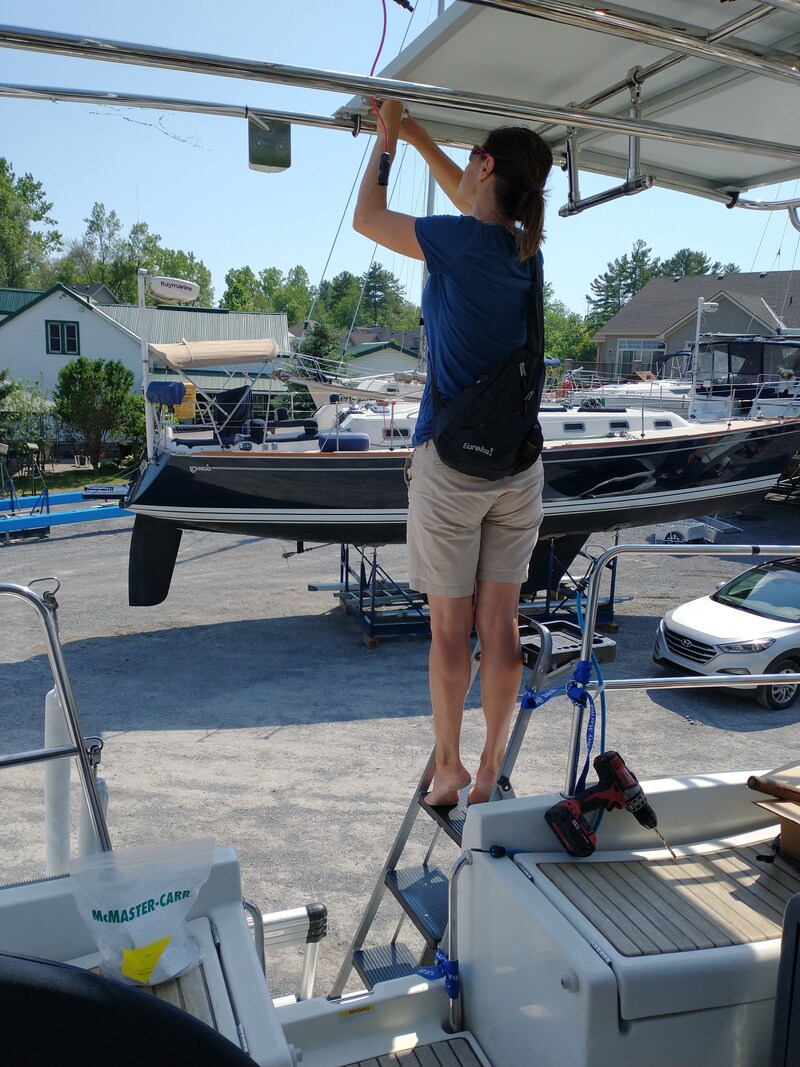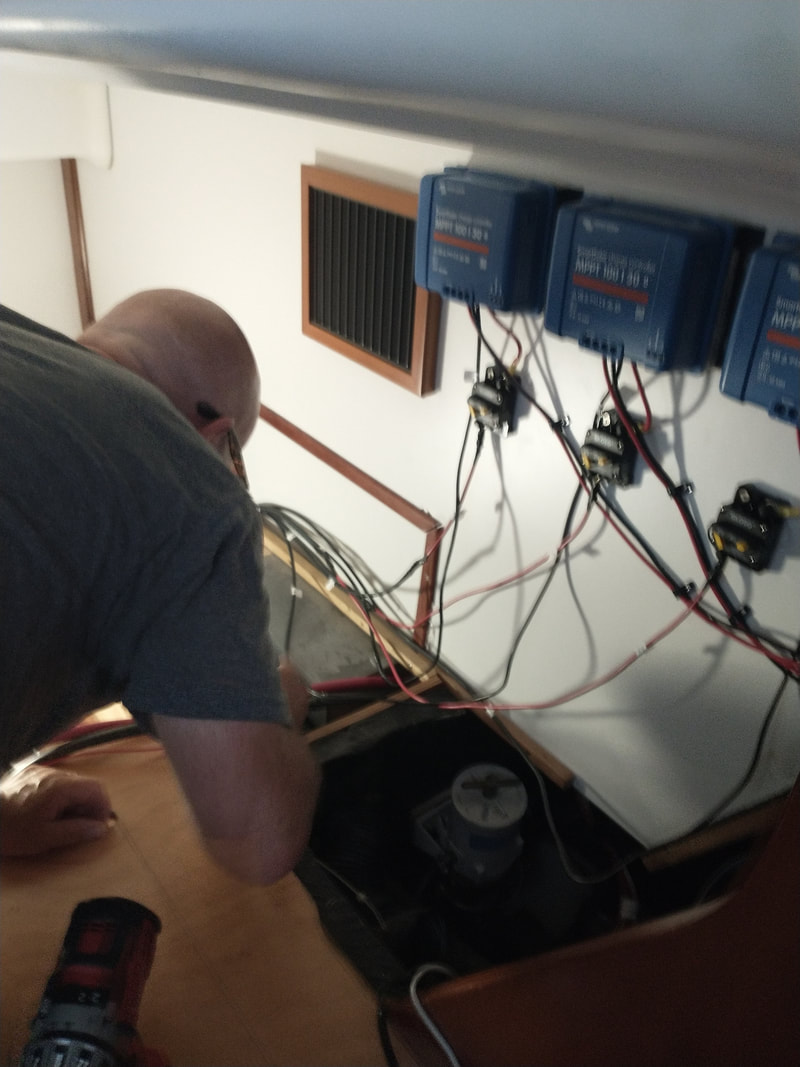Project: Upgrade to lithium batteries and a 100amp alternator plus add more solar panels
The why
We currently have a decent energy set up on Wild Horses. Our existing set up is 340 watts of solar energy feeding a 444-amp lead acid AGM battery bank, which allows us to run our boat freezer and fridge, boat pumps, cabin lights, the TV and our laptop and other electronic equipment. We do pretty well for about a week at anchor if the sun is shining. But if we get a few days of clouds, we have to start to conserve our energy. It also doesn’t let us run our air conditioner, microwave or our water maker.
The why
We currently have a decent energy set up on Wild Horses. Our existing set up is 340 watts of solar energy feeding a 444-amp lead acid AGM battery bank, which allows us to run our boat freezer and fridge, boat pumps, cabin lights, the TV and our laptop and other electronic equipment. We do pretty well for about a week at anchor if the sun is shining. But if we get a few days of clouds, we have to start to conserve our energy. It also doesn’t let us run our air conditioner, microwave or our water maker.
The plan
1. Research, research, research - this is about 90% of the project time. Buying the right sized equipment from the right retailor for the right price is important to us.
2. Purchase the lithium batteries, solar, regulator and upgraded alternator
3. Install before our launch in early May
The cost
All the components come with big price tags so make sure you are sitting down when you read this! Keep in mind that this is a one-time purchase. Yes, all things wear out eventually but
$2,200 1,050 watts of solar (MSI brand) + 3 Victron bluetooth solar charge controllers + 3 marine breakers + installation and mounting kits + cables
$8,000 960ah of lithium batteries (MSI brand)
$1,000 Balmer 100 amp alternator
$500 Balmer Max regulator
$425 labour (alternator install)
$0 labour (solar and batteries install - Mike did the install himself...well, I held the flashlight 😉)
Total cost - $12,125 CAD including taxes
Getting it done
The research
We spent loads of time on this step. The meat of it started several years ago when we saw a seminar at the Toronto Boat Show about a novel idea of using a combination of lithium batteries and solar to provide enough energy on the boat to run an air conditioner at anchor. We have an air conditioner on Wild Horses but could only enjoy it when we were plugged in to shore power (at dock). This was just the spark we needed. In the time since then, Mike had researched everything to know about lithium batteries including cost, installation, compatible systems (solar, alternator, wind) and their requirements and, finally, watched as savvy cruisers around the world started to install and enjoy them. The price of lithium has dropped significantly since 2020 so we made the leap ourselves in 2021.
Installations
Both the batteries and the solar panels were purchased from MSI in Toronto. We opted to pick up everything from the Toronto MSI locations since we we planned to do the installs ourselves. Thankfully the two very large lithium batteries and five also very large solar panels fit in the two SUVs we drove to Toronto. All the gear then went to Wild Horses to be installed...by us...deep breath in.
1. Research, research, research - this is about 90% of the project time. Buying the right sized equipment from the right retailor for the right price is important to us.
2. Purchase the lithium batteries, solar, regulator and upgraded alternator
3. Install before our launch in early May
The cost
All the components come with big price tags so make sure you are sitting down when you read this! Keep in mind that this is a one-time purchase. Yes, all things wear out eventually but
$2,200 1,050 watts of solar (MSI brand) + 3 Victron bluetooth solar charge controllers + 3 marine breakers + installation and mounting kits + cables
$8,000 960ah of lithium batteries (MSI brand)
$1,000 Balmer 100 amp alternator
$500 Balmer Max regulator
$425 labour (alternator install)
$0 labour (solar and batteries install - Mike did the install himself...well, I held the flashlight 😉)
Total cost - $12,125 CAD including taxes
Getting it done
The research
We spent loads of time on this step. The meat of it started several years ago when we saw a seminar at the Toronto Boat Show about a novel idea of using a combination of lithium batteries and solar to provide enough energy on the boat to run an air conditioner at anchor. We have an air conditioner on Wild Horses but could only enjoy it when we were plugged in to shore power (at dock). This was just the spark we needed. In the time since then, Mike had researched everything to know about lithium batteries including cost, installation, compatible systems (solar, alternator, wind) and their requirements and, finally, watched as savvy cruisers around the world started to install and enjoy them. The price of lithium has dropped significantly since 2020 so we made the leap ourselves in 2021.
Installations
Both the batteries and the solar panels were purchased from MSI in Toronto. We opted to pick up everything from the Toronto MSI locations since we we planned to do the installs ourselves. Thankfully the two very large lithium batteries and five also very large solar panels fit in the two SUVs we drove to Toronto. All the gear then went to Wild Horses to be installed...by us...deep breath in.
The batteries - Our first challenge was to get the batteries on board. We wanted everything installed while the boat was still in its land cradle so this meant getting two 120 lb batteries up a ladder and into the boat. The think-smart-not-hard solution? Loyalist Cove Marina generously agreed to use their forklift to get the batteries into our cockpit. Yes!
Installation of the batteries was fairly simple in design but was made a little more complicated as Mike had to un-due a very strange battery wiring set up on Wild Horses. The "start" battery (previously an AGM battery) had been wired in separately as the "house" bank. The true "house" battery was also separately wired, as was the inverter but then all components were wired in together. The result was supposed to be that the batteries were wired in parallel (both batteries function as one). But, no. What was actually happening was that one battery would get drawn down first but charged second, and the other battery would get drawn down second but charged first. So, yes, a re-wiring effort had to be done. Thankfully, with a little yoga and twisted fingers, he could access all the wires to be removed. He then purchased new cables and wired our two new lithium batteries, correctly in parallel.
Installation of the batteries was fairly simple in design but was made a little more complicated as Mike had to un-due a very strange battery wiring set up on Wild Horses. The "start" battery (previously an AGM battery) had been wired in separately as the "house" bank. The true "house" battery was also separately wired, as was the inverter but then all components were wired in together. The result was supposed to be that the batteries were wired in parallel (both batteries function as one). But, no. What was actually happening was that one battery would get drawn down first but charged second, and the other battery would get drawn down second but charged first. So, yes, a re-wiring effort had to be done. Thankfully, with a little yoga and twisted fingers, he could access all the wires to be removed. He then purchased new cables and wired our two new lithium batteries, correctly in parallel.
The solar panels - This was a big job! It wasn't complicated, just awkward being that we had to manage the large panels (with sharp corners) carefully at the stern of the boat. The top of the arch sits a little outside of arm's reach so we had to be pretty agile and steady while moving the panels into place and securing them to the arch.
With the panels in place, next came wiring the panels into our three charge controllers (2 solar panels per charger + one that is a single on a charger). This was a plug and play job that only took a few hours to complete. Then the solar panels were up and running!
With the panels in place, next came wiring the panels into our three charge controllers (2 solar panels per charger + one that is a single on a charger). This was a plug and play job that only took a few hours to complete. Then the solar panels were up and running!
The End Result
We are enjoying having lots of power! Our new set up runs almost everything we need on a daily on our boat at anchor - inverter, microwave, portable washer/spinner, lights, TV, Starlink, refrigerator, freezer etc. To be honest, we do find that we still need to balance sunny days versus rainy days. Sunny days, we have lots of power and can even use our induction cooktop or instant pot. We generally get back to 100% by 2pm on those days. Rainy days, not so much. We struggle to get back to 100% and several rainy days in a row mean that we have to start conserving power. Our plan going forward are to add more solar (likely another 300 watts) to really top us off to cover the rainy days.
Also, although we have an air conditioner, we have not yet wired it to our DC panel. Yes, we live aboard in some very hot climates, but we haven't yet reached a point where we feel an air conditioner is necessary.
For our Rainman water maker, we run it off our Honda 2200 generator quite nicely.
We are enjoying having lots of power! Our new set up runs almost everything we need on a daily on our boat at anchor - inverter, microwave, portable washer/spinner, lights, TV, Starlink, refrigerator, freezer etc. To be honest, we do find that we still need to balance sunny days versus rainy days. Sunny days, we have lots of power and can even use our induction cooktop or instant pot. We generally get back to 100% by 2pm on those days. Rainy days, not so much. We struggle to get back to 100% and several rainy days in a row mean that we have to start conserving power. Our plan going forward are to add more solar (likely another 300 watts) to really top us off to cover the rainy days.
Also, although we have an air conditioner, we have not yet wired it to our DC panel. Yes, we live aboard in some very hot climates, but we haven't yet reached a point where we feel an air conditioner is necessary.
For our Rainman water maker, we run it off our Honda 2200 generator quite nicely.
